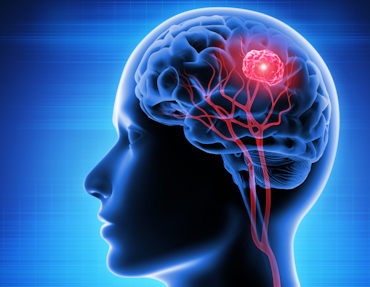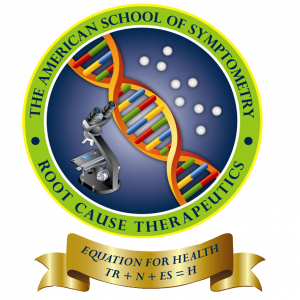
Dr. Maxwell Nartey
Professor of Symptometric Science, American School of Symptometry, NFP
Reading Part 1 is necessary to understand Part 2 (this article). Part 2 begins now.
Considering what we now know about tumors, thanks to Symptometric Science, it would be foolish and a serious mistake to allow a tumor to grow in any part of our bodies.
A tumor that is already in our body should never be allowed to grow, and it is not even necessary to have it surgically removed. It should be shrunk.
For thousands of years, medical science has made tumors into complete mysteries, making inoperable tumors sound like death sentences. No tumor should ever be a death sentence.
It is where the tumor formed and started growing, especially in the ducts (ductal tumors), that should be a serious concern. What makes matters worse is that oncologists cannot even share with their patients what makes tumors grow.
Symptometric Science had to conduct extensive research to identify allyl sulfide in two vegetables and 51 sources of fructose to know who the real monsters were and still are as far as tumors are concerned.
People have just been wading in pitch darkness without any verifiable information on why they got a benign or malignant tumor. Symptometric Science is now ending all this confusion by sharing the facts.
Two kinds of tumors
There are operable tumors and inoperable tumors.
If a tumor cannot be surgically removed because it is in a duct or deep inside a gland, the best advice is to leave it alone and begin to shrink it. Do people know what it takes to shrink a tumor? No, most people don’t. This is the problem.
Triple-negative breast cancer means nothing. Is the tumor in the lactiferous duct, in the larger mammary gland, or in the breast’s adipose (fat) tissue?
Know why the tumor pierced the skin of the breast to cause an ulcer. I shared these details in Part 1 of this series. Also, the idea that the tumor is aggressive means nothing. Tumors grow or do not grow. It is better if they do not grow.
Finally, the idea that some tumors are more common in Blacks than in Whites or Asians makes no sense. A tumor is a tumor. Human DNA is human DNA, and human cells are human cells. When I am examining human cells under a microscope, there are no indications that the cells under examination are those of a Filipino, German, Mauritanian, Indian, or Nepalese.
Genes do not cause tumors. Genes play only one role: they transmit the blueprint to messenger RNA. They do nothing else. Certain proteins will not be produced if something prevents the genes from transmitting the blueprint to messenger RNA. Is it that simple? Yes.
Did the tumor occur in a duct, in fat tissue, or in glandular tissue? That is the question that should be asked and answered.
Fat tissue is dense. Feel the breast. It is full of fat because 70% of it must be fat. Hence its density.
Because of breast density, a mammogram can detect anomalies without crystalizing what they are. If a tumor is ruled out, the next question is, is the rest calcification or sludge? Some women have knots in their breasts. This should not be cause for concern because electrolytic dissociation easily flattens these breast knots, some of which contain calcification. Hence, their hard base.
Because the breast is dense, it has more fructose than the amount of fructose in a duct, bone, or gland. This explains why tumors grow faster in fat tissue. The adjective “aggressive,” which is often used to describe certain tumors, is not necessary. Just understand why tumors grow faster in fat tissue.
Herbalists don’t shrink tumors. How can they shrink a tumor if they don’t know what started it and its growth factors? There is some sketchy evidence that radiation and chemotherapy shrank a few tumors, but they grew back. I had cousins who opted for radiation or chemotherapy. They are no longer around.
Most of the inoperable tumors are ductal tumors, gliomas, and glioblastomas.
A tumor that grows in the ducts can cause serious blockages, resulting in health problems:
- A tumor in the pancreatic duct will block the flow of pancreatic juices and enzymes for digestion, causing chronic digestive problems, including bloating, gassiness, and malnutrition in people with pancreatic cancer.
- A gallbladder duct tumor will block bile flow from the gallbladder to the cystic and hepatic ducts, causing serious digestive problems.
- A tumor in the lachrymal gland duct will block the flow of tears or lysozyme to the eye, causing dry eyes.
- A tumor in the hepatic duct and cystic duct will block the flow of bile from the liver to the gallbladder, causing colorless urine and whitish stool devoid of stercobilin and urobilin. Bile comprises bilirubin, bile salts, electrolytes, water, phospholipids, and cholesterol.
- A tumor in the salivary gland duct will block the flow of saliva, which contains mineral salts, protein, amylase, water, and mucus. This can cause dry mouth, chronic halitosis (bad breath), and friction when chewing food. Friction causes abrasion, which in turn causes stomatitis (mouth ulcers).
- A tumor in the sweat gland duct will block the flow of sweat, causing the inability to sweat and returning what should have been eliminated back to the blood, making it dirtier.
- Sludge in the sweat gland duct will cause excessive sweating and overheating, which are erroneously called symptoms of menopause. Sludge in the sweat glands can also cause fever due to the hypothalamus’ inability to use the sweat glands to regulate body temperature and keep it at 98.4 or .6 degrees Fahrenheit. Worms may also cause elevated temperature by blocking the sweat glands’ ducts. This is called worm fever, making a mockery of a drug used to lower temperature.
- A tumor in the kidneys can shut them down, placing the person on dialysis. Here is what else to know. The kidney ducts are called renal collecting ducts. They transport urine from the nephrons (one million of them in each kidney) to the renal pelvis and ureters. Tumors in the renal collecting ducts will stop the person from producing urine, causing catheterization with devastating consequences, especially septicemia. Therefore, ductal tumors can place a person on dialysis and can cause catheterization.
Even if electrodiagnosis detects a tumor or several tumors in the pancreatic duct, liver ducts, gallbladder ducts, kidneys, etc., what can physicians do? Nothing, and they cannot even recommend surgery because the tumor is inoperable.
Since nothing can be done to remove ductal tumors, the advice is to avoid creating situations that allow tumors to grow in your ducts. How? By studying how fructose and allylsulfide cause and grow tumors in a person.
Diet
Changing one’s diet without knowing the tumor growth factors, performing electrolytic dissociation, and producing enzymes to shrink the tumors will not help.
Fasting will also not help. The neighboring cells must have resources to produce tumor-shrinking enzymes called transferase bond breakers.
These bond breakers will keep breaking the hydrogen bonds that hold the tumor together until it is flattened. This is the most natural and scientific way to shrink a tumor so it does not regrow.
Liver tumors
The liver is an extremely fertile place for tumor growth.
Would liver tumors augur well for a person? No. The liver comprises over 200 million hepatocytes. Hepatocytes are highly specialized cells that produce bile and detoxification enzymes, convert amino acids, and perform about 12 different functions to keep us healthy.
The bile produced must be transported internally through several intrahepatic ducts that empty bile into the right and left hepatic ducts. Then, bile must be stored in the gallbladder. People whose gallbladders have been surgically removed will overburden their livers, which must find a way to store bile. Hepatocytes don’t store bile. They produce bile. The additional burden of storing bile will cause liver stress with severe consequences.
Outside the liver, the right and left hepatic ducts join to form the common hepatic duct.
The common hepatic duct joins the cystic duct from the gallbladder to form the common bile duct. The common bile duct crosses the pancreas to end in the small intestine, where it empties bile. Here is my question.
If there are tumors in the various liver ducts and gallbladder ducts, can bile be circulated? No. What would happen if bile cannot be circulated from the liver or cannot leave the gallbladder because tumors and encroachment are blocking its exit?
Bile will overflow to cause jaundice, the liver will be inflamed or enlarged, or the person will experience slow digestion or chronic indigestion. Some people may have a dirty yellow conjunctiva without being diagnosed with jaundice.
Considering the above, can the herb milk thistle address the liver’s concerns? No.
Can pharmaceutical drugs address the liver’s concerns? No.
The liver problem runs deeper than what I have discussed. So far, I have discussed tumors growing in ducts. What about tumors growing in ductless glands and causing weight loss, inability to gain weight, and all kinds of digestive and hormonal problems? This will be discussed in Part 3. Stay tuned.
© Copyright 2024, The American School of Symptometry, NFP. No part of this publication may be reproduced or transmitted in any form or by any means, electronic or mechanical, including photocopying, recording, or by any information storage and retrieval system without the written permission of The American School of Symptometry, NFP. Library of Congress copyright number Txu 1-621-370, Washington D.C.


 Previous Post
Previous Post